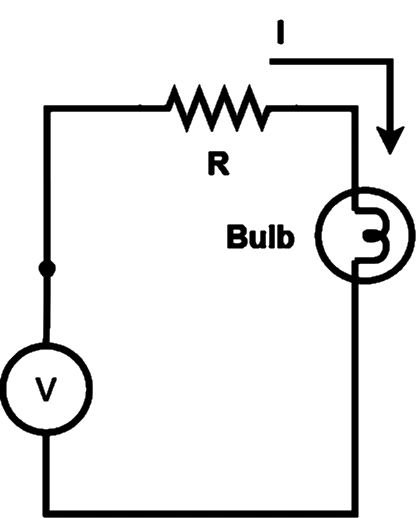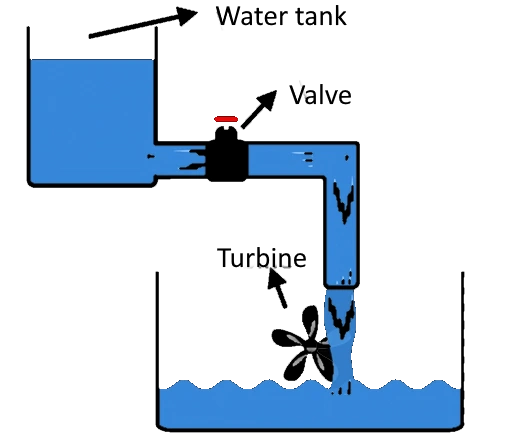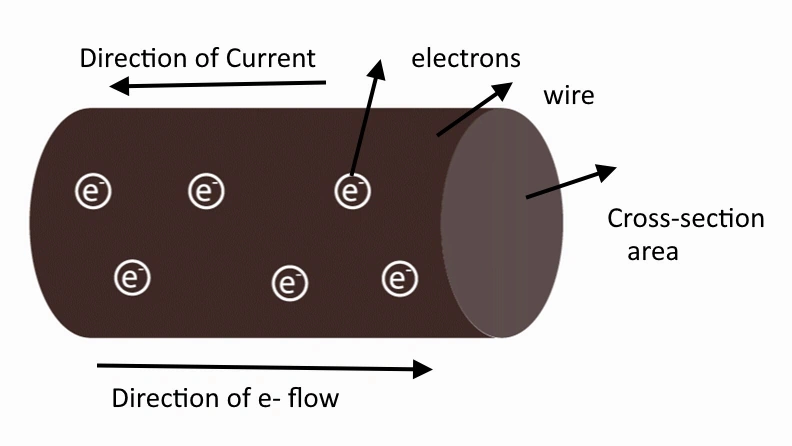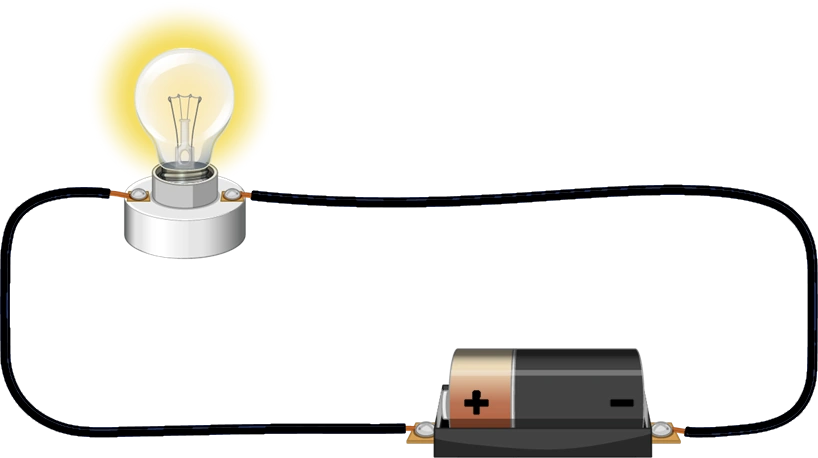Introduction to Network Theory and Basic Terms (13:39)
Lecture notes
Network theory is the study of networks and circuits. We will learn some basic terms of network theory one by one.
Analogy between Electrical system and mechanical system
For understanding the analogy i.e. similarity between the electrical system and mechanical system , consider the diagram below.
Fig. 1 shows the electrical circuit which consists of resistance, voltage source, switch and a bulb.

Fig. 2 shows the mechanical system which consists of a water tank, valve and a turbine.

In electrical system, when a switch is closed, the current will flow in the circuit and the bulb will be turn on same as in the mechanical system where when the valve is open, the water will flow through the pipe and it will flows down through water tank which will rotate the turbine.
From the electrical and mechanical system, we will observe the following type of analogy. They are as follows.
| Electrical System | Mechanical System |
| Driving Force ➞ Voltage source | Driving Force ➞ Water tank |
| Opposition ➞ Resistance | Opposition ➞ Valve opening |
| Working medium ➞ Current | Working medium ➞ Flow of water through valve |
| Output ➞ Light intensity from Bulb | Output ➞ Speed of Rotation of turbine |
This analogy may help you understand the working of an electrical system like a mechanical one.
Basics of Current and voltage
■ Current – Current is the Flow of electricity in an electrical circuit.
Consider an wire, where s is the cross section area , q is the charge . We know that one electron = -1.6 x 10-19 C . Charge is given as, q= ne
where q is charge , n = no. of electrons flowing through wire , e = charge of electron . s= cross sectional area.

We can see that electrons are moving from left to right but the direction of current is right to left.
Direction of current is opposite to that of electrons. Current is the ratio of change in charge with respect to change in time.
i=\frac{dq}{dt}When you observe any electrical circuit, there is a battery, that there are two terminal, + and – . the positive terminal and the negative terminal. Current will always flow through higher potential to lower potential.

■ Current density – Current density refers to the amount of electric current flowing through a specific cross-sectional area of a conductor. It is a vector quantity and is denoted by the symbol J.
J=\frac{I}{S}A/m^{2}The current density is inversely proportional to the cross- sectional area. .
J ∝ 1/S
As S(cross-sectional area increases) , current decreases.
Now, let us understand what is voltage.
Voltage is generally referred by different names like potential difference, electric tension and Electric pressure.
■ Voltage – It refers to the work needed per unit of charge to move a test charge between two points. The unit is volts.
V=\frac{W}{q}W- Work done
q- Charge
Battery/EMF, performs necessary work to circulate the charge through the circuit i.e. provides Voltage/P.D.
Another basic term and most important law in Network Theory is the Ohm’s law.
■ Ohm’s law – Ohm’s law states that Current flowing through the conductor is directly proportional to the voltage.
It states that the current passing through a conductor is directly proportional to the voltage applied across it and inversely proportional to the resistance of the conductor.
Ohm’s law is expressed as V=IR
where R= Resistance , I= Current passing through the conductor
V= Voltage across the conducor.
Limitations of Ohm’s law :-
■ It is valid for metal conductors, at specified temperature and other physical conditions remains constant.
■ It is not applicable to gaseous conductors like Graphite.
■ It is not applicable to semiconductors like Ge and Si.
